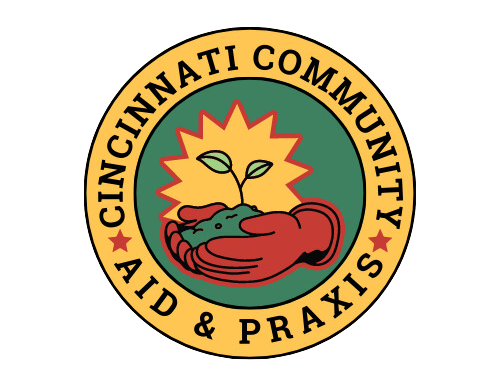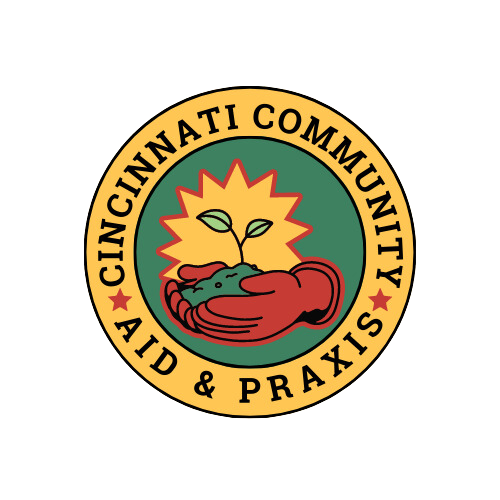
Estimated reading time: 8 minutes
On September 7th, the Connecticut Radical Reading Group (CTRRG) hosted a conference which was attended by two delegates from Cincinnati Community Aid and Praxis (CCAP). The purpose of this conference was to build connections between the attending organizations, share our lessons and analyses, and struggle constructively with one another. In addition, the conference aimed to establish a second order organization, or Worker’s League, which would unite those organizations in attendance should they agree to its founding.
Attendance at the conference was split between two groups, voting members and non-voting members. Voting members consisted of those organizations which met the criteria outlined in the convention proposal: have a defined democratic structure, have a nominal commitment to Marxism-Leninism, and have at least five full and active members. Non-voting members were made up of organizations which either did not meet one or more of the criteria or did not grant its delegates the power to enter into preliminary agreements. Among the non-voting members were a number of observer organizations.
Outside of CCAP and CTRRG, the conference was attended by representatives from the Kansas Socialist Book Club (KSBC), Red Help Austin TX, the Atlantic Regional Communist Party (ARCP), the Shenandoah Valley cadre, Unity of Fields (formerly PAL Action US), the People’s University of Amherst (PUA), and Ocean State Student and Worker Alliance (OSSWA), among a few other unaffiliated individuals. Additionally, representatives from the Chunka Luta Network (CLN) and Red Sails were present online for a short while. Of these attendees, only CCAP, CTRRG, and the ARCP qualified as voting members, while Unity of Fields, OSSWA, and the PUA were in attendance solely as observers.
The conference opened with a “State of the Movement” address written and delivered by the CTRRG, which laid out the background for this conference and why it was deemed necessary. The piece assessed the conditions of our current historical moment, and concluded that no Communist Party exists nor has a legitimate Communist Party ever existed on this continent. Therefore, they posit, it is our role to build one. The piece explored the histories of the Communist Party of the Soviet Union and the Communist Party of China, which were formed through the unification of and struggle between different Marxist organizations and study groups. The principal method by which this happened was the formation of Leagues which unified small, local organizations into “organizations of organizations.” The League form existed as a step up from the local organization and a step below a party. Therefore, the intent of this conference was to struggle over this idea with other capable, principled Marxists and to establish such a League if the struggle led in that direction.
After the initial address, individual organizations were given the opportunity to present reports of their own. Reports were prepared and delivered by the Shenandoah Valley cadre, CCAP, the ARCP, Red Help, and KSBC. Each report explored the conditions of the struggle in each of their localities and centered on specific lessons each organization had learned from their experience organizing. The Shenandoah cadre shared the lessons they learned from a recent split in their organization, CCAP shared its plans for a cadre development program, the ARCP described organizing conditions in Canada and the tensions between settlers and the Indigenous, Red Help discussed their recent expulsion from CPUSA, and KSBC presented their plans for expansion and the process of their education program as well. Each report was followed by a period of discussion whereby people in attendance asked clarifying questions, critiqued elements of the report, and contributed any other relevant experience or information to the topic at hand.
Following the reports, discussion turned to the formation of a Worker’s League. It was during this time that OSSWA raised criticisms that they had developed of the idea of a League and shared their conception of the vanguard party. It was the opinion of these attendees that the reconstitution of the Communist Party should follow the example set by the Peruvian Communist Party using the strategy of concentric construction and clandestine organization. Debate ensued around the applicability of such a strategy to the conditions of the North American Empire, the efficacy of clandestine organizing as an ideological versus a tactical concern, and the method by which mass organizing relates to party building. Ultimately, the voting members agreed to move forward with the formation of the League, with the promise that they would interrogate the strategy of concentric construction and conduct an analysis of its applicability to our current conditions.
Of the three voting members present, CCAP and the CTRRG voted to establish the League. The ARCP, citing labor shortage in their current work, deferred their entry into the League until a later date. Additionally, a number of the observer organizations professed an interest in joining the League as either candidate or member organizations upon reporting back to their respective cadres.
At a special session of the General Body held on September 17th, CCAP voted to ratify the League charter and join as full members.
Analysis
What is a League and why did the conference set out to establish one?
The Lake Quonnipaug Conference came as a step in the strategy for party building as outlined by the prospectus of the Unity–Struggle–Unity Press organization, which is a strategy that we at CCAP have also arrived at and have chosen to adopt. This strategy, as demonstrated by the founding of the Communist Party of the Soviet Union and of the Communist Party of China, is characterized not by the direct growth of one individual organization that becomes the vanguard, but the establishment of unity between existing organizations and the formation of “organizations of organizations.” A League is such an organization, a second-order organization of which the membership consists not of individuals but of other primary, local, organizations. A League is not a party, however it is still an advancement in organizational complexity and capability over a primary organization, and lays the groundwork for the development of further unity and the eventual establishment of a party.
The purpose of the All-Empire Worker’s League is two-fold. On the one hand, it establishes unity between a number of existing primary organizations on the basis of a shared commitment to Marxism and a shared strategy for party building. It establishes a meaningful and lasting connection between such organizations whereby they are in active, formalized relation and communication with one another to coordinate efforts, struggle ideologically, and provide strategic resources between them. On the other hand, it serves as a living example of the strategy it is following. Ultimately, the party would be founded through the unity between a number of Leagues, therefore it is our aim to inspire others to create unity between principled Marxist formations in their own localities and form Leagues of their own. The All-Empire Worker’s League thus serves as an example that such a strategy is viable and provides a model for others to follow.
Our delegates felt that the conference itself was extremely successful, not only because it managed to achieve its stated aims. Possibly the most important and most valuable part of the conference was the connection made between the groups present. Many of these groups did not have formal communications with one another prior to the conference. Many had not even heard of one another. However, what we found was a collection of the most principled, most revolutionary, most dedicated comrades from all around the country who we established meaningful and lasting connections with. The conference served as a place for principled struggle, for sharing organizing tactics and strategies, for educating one another on our specific conditions and efforts, and for learning from the varied experiences of our newfound comrades.
Conclusion
All the proceedings from the conference including meeting minutes, copies of organization reports, and the Worker’s League charter will be published in full in the Red Clarion. We recommend that any and all comrades who are curious about the conference go and review the materials when they become available. Additionally, we recommend that interested organizations review the League charter and consider applying to join, or consider an effort to establish a League of their own with organizations in their specific locality.
Any questions about the League, the conference, or CCAP’s role in it, please reach out to us through Unity–Struggle–Unity, our Instagram, or our email: cincycap@protonmail.com.

